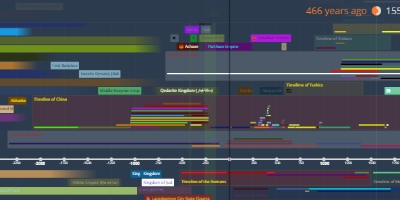Tokugawa Shogunate (徳川幕府) (jan 1, 1603 – jan 2, 1868)
Description:
The Tokugawa shogunate (/ˌtɒkuːˈɡɑːwə/, Japanese 徳川幕府 Tokugawa bakufu), also known as the Edo shogunate (江戸幕府, Edo bakufu), was the feudal military government of Japan during the Edo period from 1603 to 1868.The Tokugawa shogunate was established by Tokugawa Ieyasu after victory at the Battle of Sekigahara, ending the civil wars of the Sengoku period following the collapse of the Ashikaga shogunate. Ieyasu became the shōgun, and the Tokugawa clan governed Japan from Edo Castle in the eastern city of Edo (Tokyo) along with the daimyō lords of the samurai class. The Tokugawa shogunate organized Japanese society under the strict Tokugawa class system and banned most foreigners under the isolationist policies of Sakoku to promote political stability. The Tokugawa shoguns governed Japan in a feudal system, with each daimyō administering a han (feudal domain), although the country was still nominally organized as imperial provinces. Under the Tokugawa shogunate, Japan experienced rapid economic growth and urbanization, which led to the rise of the merchant class and Ukiyo culture.
The Tokugawa shogunate declined during the Bakumatsu ("final act of the shogunate") period from 1853 and was overthrown by supporters of the Imperial Court in the Meiji Restoration in 1868. The Empire of Japan was established under the Meiji government, and Tokugawa loyalists continued to fight in the Boshin War until the defeat of the Republic of Ezo at the Battle of Hakodate in June 1869.
Added to timeline:
Date:
jan 1, 1603
jan 2, 1868
~ 265 years
